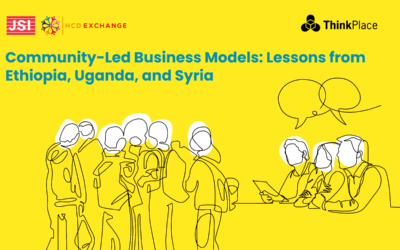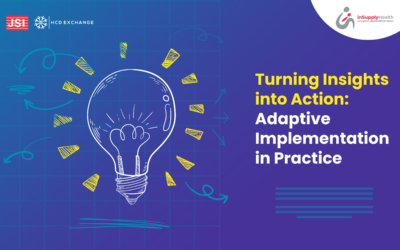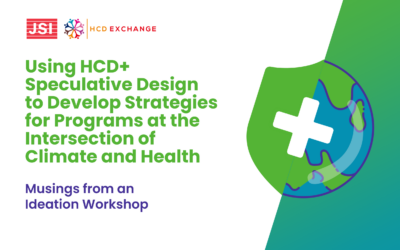Case Study 1: Thali Model
How do you determine the costs of scaling an intervention?
Scaling an intervention does not always mean increased costs. Scaling can be focused on expanding the impact at a rate that outstrips the resources invested and better meets the people’s needs. However, interventions differ by nature, and the costs for scaling also differ depending on the context. Determining the cost of scaling means understanding the different ways to scale. In this video, Spring Impact discusses the different ways to scale interventions.
How do you overcome some behavior-related challenges, particularly inherited cultural feeding practices?
Changing cultural norms and practices is a tall order that needs an engagement with the custodians of the practices, such as community leaders. Behavioral integration is one of the ways public health professionals can address “sticky issues” such as inherited cultural feeding practices affecting nutrition outcomes in the focus population. With this framework, you can align system actors towards a shared outcome or goal by defining and measuring evidence-based pathways to change. One tool that is used to map out these pathways is a behavior profile that supports teams in analyzing the factors and actors influencing behaviors and using that analysis to design activities and strategies that affect or leverage those factors/actors.
How do you ensure the solution keeps within the constraints of what technology can do and what resources are available?
It is important to design solutions that align with what is feasible regarding technological and resource constraints. What this means is that solutions would ideally not be conceptualized or designed in silos without including stakeholders that understand the realities of what is practically possible.
Applying a human-centered design (HCD) process by virtue of being defined heavily by the real-life context will lead to applicable solutions. An effectively applied HCD process will consider a solution’s desirability, feasibility, and sustainability, thereby also keeping in mind and working with limitations across different parameters – resource, capacity, technology, and context-based barriers.
Is there a way to capture people’s needs that is not as cost-intensive as a full HCD process with multiple rounds of research and user testing?
It’s a common misconception that HCD always requires significant time and resources or that everyone must be involved in extensive research. At its core, HCD is simply about keeping the human at the center of our work. The double diamond (or any other formal process) is secondary to this principle. At Noora Health, the implementation team is already in regular communication with healthcare staff in public health facilities and communities, so their first step in understanding user needs is to engage with them. This approach saves considerable time, effort, and costs. Additionally, conducting secondary research and analyzing existing data is important before determining whether field research is necessary.
While observing and interacting with people is essential for those who will design the program and its tools, assessing when such activities are most effective is important. For example, when Noora Health recently considered strategically redesigning its Maternal and Child Health (MCH) program, they conducted user research primarily to understand the nuances of familial and caregiving relationships and how mothers practice the health behaviors they train them on. These insights can only be gained through in-person interaction and observing their environment.
After implementation, how do you decide when the model needs to be updated?
Once a program is launched, it’s important to collect data from multiple sources, including but not limited to:
- Quantitative monitoring data – tracking metrics such as how many people have used or accessed the services.
- Quality assurance data – assessing how well the program is functioning by regularly observing how the program is running.
- Qualitative feedback studies – performing a deeper exploration of program quality from healthcare providers and recipients.
- Evaluation data – though less frequent, these studies help us assess whether the desired health behavior change outcomes are being achieved.
Updating or redesigning the program is based on identified needs through synthesizing these data sources and considering timelines and logistical factors.
While collecting information on eating patterns from the community to develop these tools (solutions), how does one ensure that external factors do not affect their response, such as the nutrition package that women and children receive from the family’s ration from a Public Distribution scheme?
Since we all work within the public health system, we must recognize that we align with the government’s efforts. The goal is to develop interventions that complement and enhance existing government systems rather than disrupt them. It’s important to regularly map and analyze health systems to ensure our tools incorporate and support existing government initiatives. For example, when Noora Health launched the TB Family Care Model in two districts in Madhya Pradesh, India, they made sure to reference the government’s Nikshay Poshan Yojana (a free food distribution scheme) within the tools to align with the support already being provided.
However, part of complementing government efforts includes redesigning the current model they’re using to tackle malnutrition and other nutrition outcomes. As such, working with the government and engaging them in such interventions to rethink their intervention strategy is a worthwhile cause.
Read more about the Thali/Thala model here: https://noorahealth.org/thecompanion/introducing-the-thali-model-to-transform-maternal-nutrition/
Case Study 2: GEMS Program
How do you avoid response bias? Where research participants may say they love everything you’ve presented to them but don’t express their genuine feedback or reservations
The first thing to acknowledge is that bias is inevitable. Once we accept this, it becomes easier to approach feedback with a healthy level of skepticism, taking every opinion or response with a pinch of salt. Instead of focusing on eliminating bias entirely, we aim to minimize it by implementing the following strategies:
- Gather feedback from a sufficient number of people. Bias tends to diminish when multiple responses are synthesized, allowing patterns and outliers to emerge.
- Consider the diversity of perspectives. Along with having a large enough sample size, it’s crucial to ensure the perspectives are varied. For example, in a public health setting, make it a point to gather insights from different stakeholders, including health providers, community leaders, government staff, and any other key informant.
- Combine qualitative feedback with observation and probing. When someone responds to a question, it’s important to observe their expressions and body language, which can reveal unspoken nuances. Probing questions also helps us dig deeper into why certain views are expressed, leading to a more complete understanding of the feedback.
From start to finish, how many months did it take to develop and test the service prototype? What was your total test sample?
For Noora Health, designing the General Medicine and Surgery (GeMS) program in Bangladesh took 5 months from start to finish. However, the actual design and development of the service prototype took just 1 week once all the data was synthesized, and they tested the same prototype in 2 days.
The reason for the short timeframe in prototyping was due to the detailed groundwork they had already done. During the needs-finding phase, they specifically asked questions to understand what patients and caregivers required. For example, when speaking to diabetic foot patients, they learned that many were unaware of the foods they should be eating, which contributed to their prolonged hospital stays. This insight led to the creation of the Thali Model, a visually engaging tool that helped deliver this important dietary information.
More time was spent synthesizing the data, working with hospital staff, and understanding how the service would fit within the existing system. Nurses and other key stakeholders were involved as they would deliver the Care Companion Program (CCP) sessions.
After finalizing two key tools based on identified touchpoints, Noora Health conducted rapid testing with 4 nurses, 50 participants from all the different team members, and internal stakeholders present, including Training and Implementation team members. This testing was followed by field testing in two hospitals. In this phase, they worked with 5 nurses and 10 patients/caregivers to vet and finalize the prototypes they had developed.
Noora Health is writing a blog post about this Service Prototype. You will find it on their website. In the meantime, read more about Service Walkthroughs here: https://noorahealth.org/thecompanion/service-walkthroughs-for-social-change/



